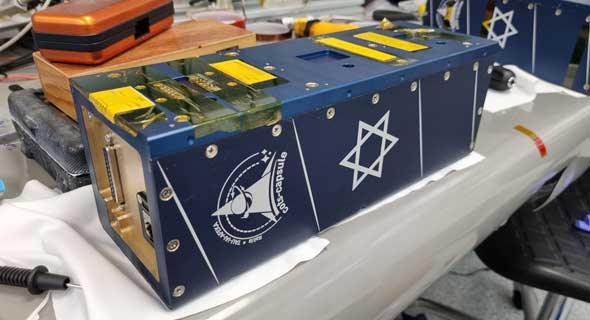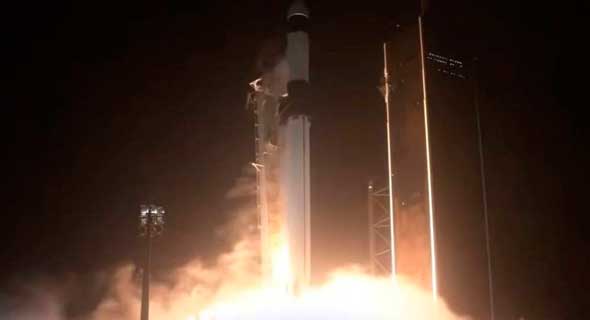TAU launches satellite to protect space systems against radiation
The “COTS-Capsule” within the TauSat-3 is one of the 43 experiments that the next Israeli astronaut will test on his mission to the International Space Station next month, after it successfully docked on Sunday
The “COTS-Capsule” will be included as part of the series of 43 experiments that second-Israeli astronaut Eytan Stibbe will take part in during his 10-day mission to the ISS in February as part of the “Rakia" (Sky) mission guided by the Ramon Foundation and the Israel Space Agency. In addition to the academic research, the space mission is leveraging and promoting an educational-scientific program in the field of space and radiation.
 Tel Aviv University's TauSat-3 nanosatellite before launch. Photo: TAU
Tel Aviv University's TauSat-3 nanosatellite before launch. Photo: TAU
Within the TauSat-3 is the "COTS-Capsule," an innovative space mechanism that can detect and mitigate cosmic-ray induced damage to electronic space systems. The satellite was successfully installed and put into operation aboard the station, and connected via the ISS datalink network and has communicated with ground stations. The nanosatellite, which is approximately the size of a shoebox, was designed and built by the university’s team of experts. It will examine the performance of novel radiation detection and active protective mechanisms to guard electronics from cosmic radiation induced hazardous phenomena. It will enable the use of modern commercial electronic systems in space, by incorporating them into the protected environment inside the capsule, and operating them in that specific environment. TAU relayed that its technological implications have significant economic impact.
The study was headed by PhD candidate Yoav Simhony, from the School of Electrical Engineering, together with the head of the School of Physics and Astronomy, Prof. Erez Etzion and Prof. Ofer Amrani from the Iby and Aladar Fleischman Faculty of Engineering, head of the Small Satellite Laboratory. Dolev Bashi, Elad Sagi, Dr. Yan Benhammou, Dr. Igor Zolkin, Dr. Meir Ariel, Baruch Meirovich, Orly Bloomberg, Edward Karat, Lily Almog, Yasmin Miller Zangi and the legal team, and several TAU students from the departments of electrical engineering, software, and physics also participated in the project as well as Dr. Alex Segal of the Afeka College of Engineering. NASA, Nanoracks, the Ehrlich, Samuel Berkowitz, and Herzog, Fox & Ne'eman law firms, Arotec Ltd., and Israel Aerospace Industries also took part.
 The TauSat-3 launches onboard a SpaceX Falcon 9 rocket from Florida on Dec. 21. Photo: NASA
The TauSat-3 launches onboard a SpaceX Falcon 9 rocket from Florida on Dec. 21. Photo: NASA
“Currently, electronic equipment sent to space must be specifically modified to prevent cosmic radiation induced effects. The protection provided by the COTS-Capsule will enable the use of commercial off-the-shelf components in space, thus opening the door to the use of advanced electronic components, while significantly shortening both development times and reducing the costs of space products,” said Simhony.
- Israel awards nearly $6 million in grants to space tech startups
- Who is going to stop space terrorists?
- “Bezos, Musk, and Branson have high-level plans for space; so do we”



